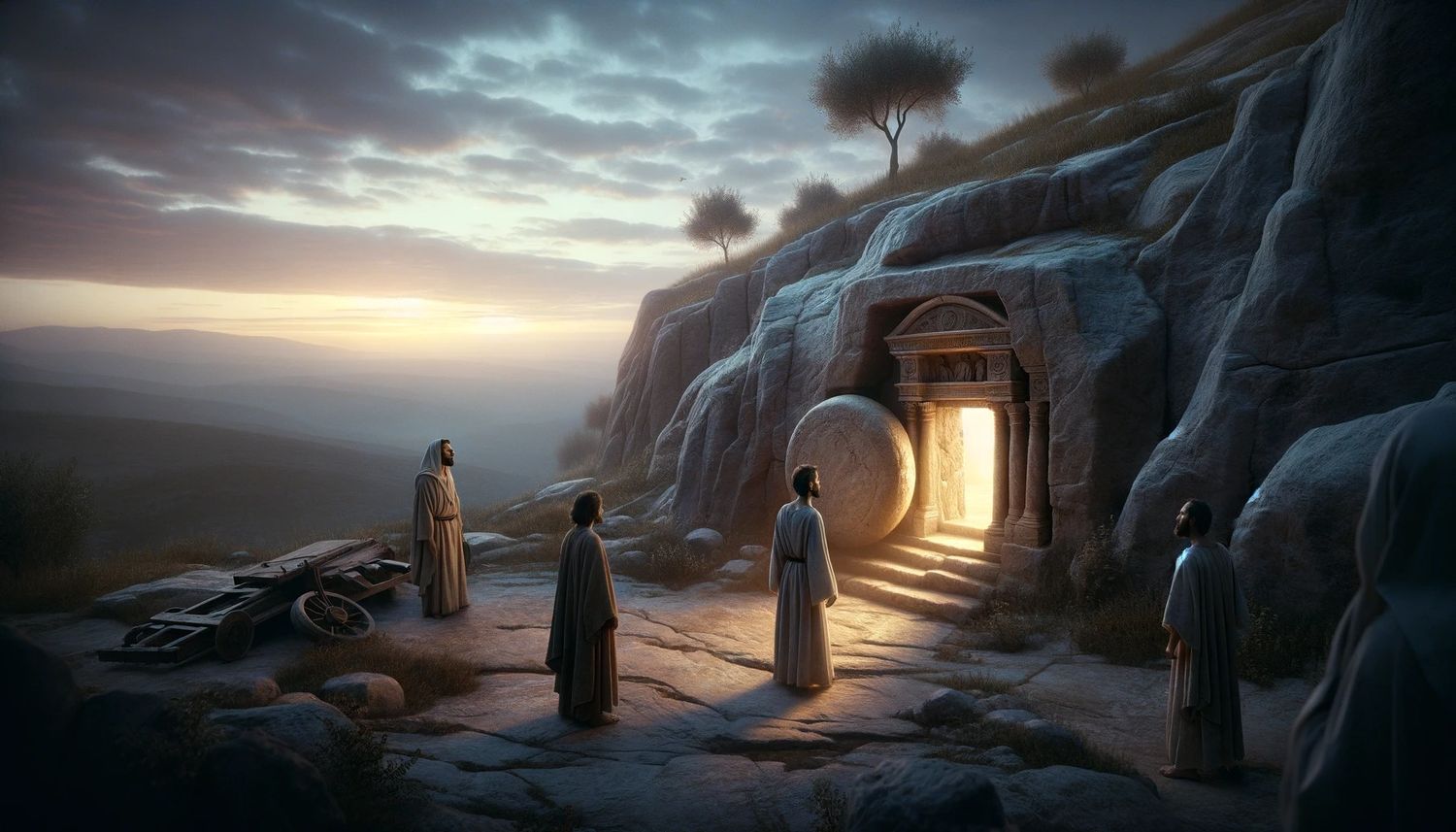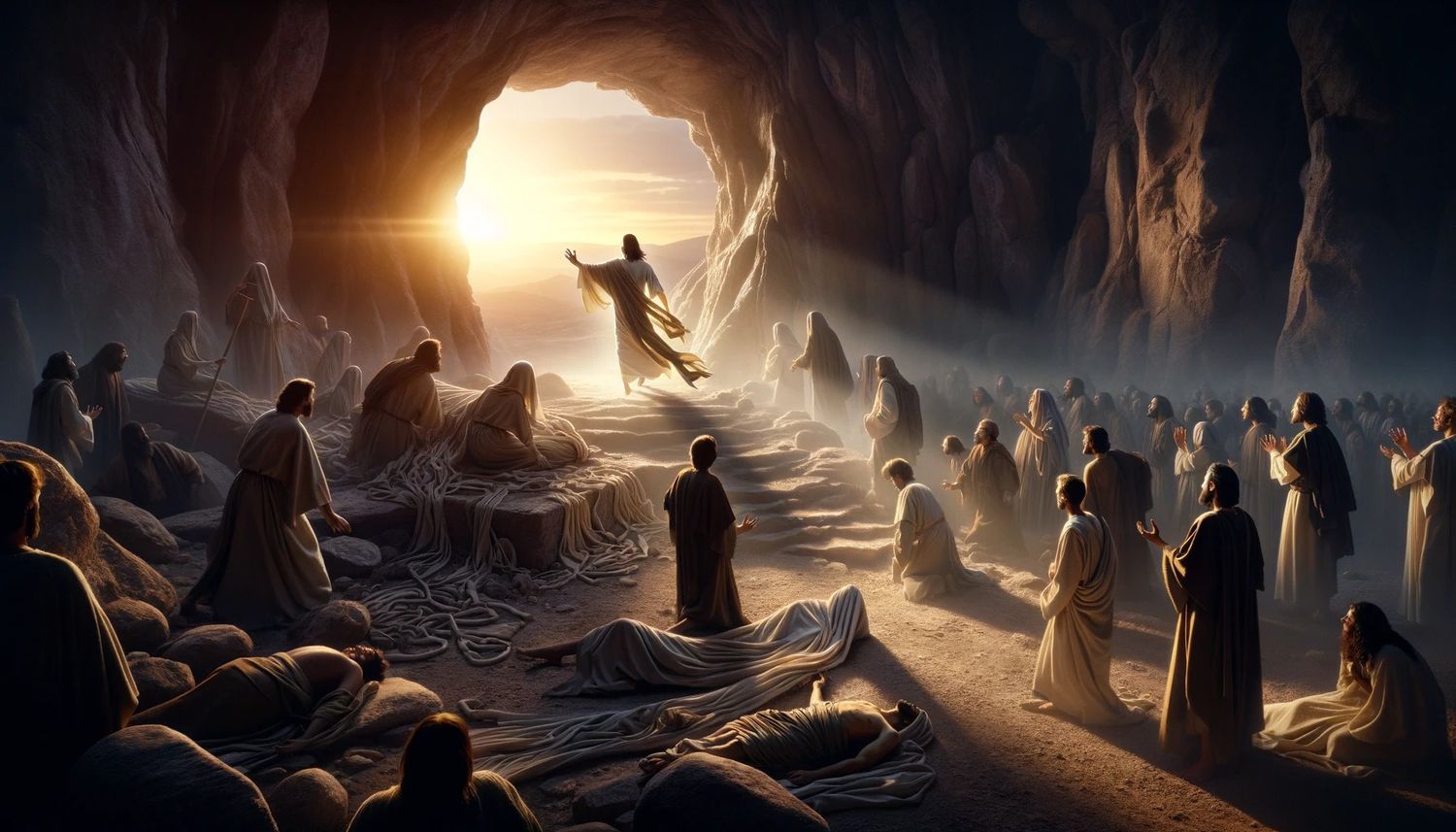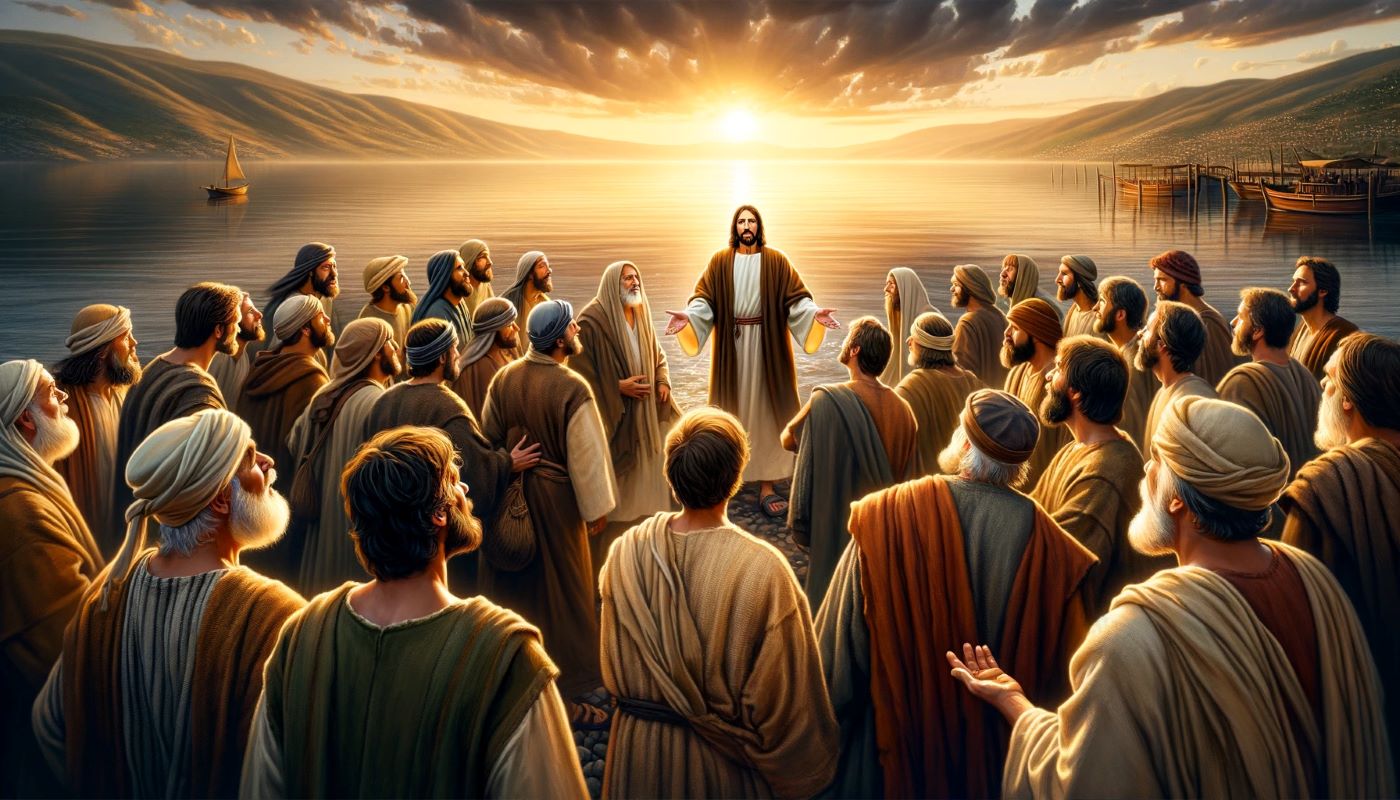Home>Christian Videos>Bible Stories>How Many Gospels Have Women Discovering Jesus First


Bible Stories
How Many Gospels Have Women Discovering Jesus First
Published: March 6, 2024
Peter Smith, Editorial Director at Christian.net, combines deep insights into faith, politics, and culture to lead content creation that resonates widely. Awarded for his contributions to religious discourse, he previously headed a major organization for religious communicators, enhancing dialogue on faith's societal impacts.
Explore the significance of women discovering Jesus first in the Bible stories. Uncover the empowering narratives and their impact on faith and history.
(Many of the links in this article redirect to a specific reviewed product. Your purchase of these products through affiliate links helps to generate commission for Christian.net, at no extra cost. Learn more)
Table of Contents
Introduction
How many gospels have women discovering Jesus first? The role of women in the discovery of Jesus after his crucifixion and resurrection is a significant aspect of the New Testament narratives. In this article, we will explore the portrayal of women in the four canonical gospels – Matthew, Mark, Luke, and John – and their involvement in the pivotal events following the crucifixion of Jesus. Each gospel presents a unique perspective on the women who were the first to witness the resurrection of Jesus, shedding light on their crucial role in the foundational moments of Christianity.
Read more: How Many Gospels Are In The Bible
The Gospel of Matthew: Women at the Empty Tomb
In the Gospel of Matthew, the narrative of the empty tomb prominently features women as the primary witnesses to the resurrection of Jesus. According to Matthew 28:1, Mary Magdalene and the other Mary went to see the tomb. As they approached, an earthquake occurred, and an angel descended from heaven, rolling back the stone from the entrance of the tomb. The angel then addressed the women, reassuring them not to be afraid and informing them that Jesus had risen from the dead. The women were instructed to go and tell the disciples about this miraculous event. As they hurried away from the tomb, Jesus appeared to them, and they worshipped him. The portrayal of women as the first witnesses to the resurrection in the Gospel of Matthew underscores their crucial role in the foundational events of Christianity.
- The women, Mary Magdalene and the other Mary, were the first to witness the angel at the empty tomb.
- The angel instructed the women to go and tell the disciples about Jesus' resurrection.
- Jesus appeared to the women as they were leaving the tomb, confirming the angel's message.
This account in the Gospel of Matthew highlights the significant role of women in the resurrection narrative, emphasizing their faithfulness and obedience in carrying the message of Jesus' resurrection to the disciples.
The Gospel of Mark: The Women at the Crucifixion and Resurrection
In the Gospel of Mark, the role of women in the crucifixion and resurrection narratives is particularly noteworthy. Mark 15:40 mentions that there were women looking on from a distance as Jesus was being crucified, including Mary Magdalene, Mary the mother of James the younger and of Joses, and Salome. These women had followed Jesus from Galilee and had provided for him. Their presence at the crucifixion signifies their unwavering loyalty and commitment to Jesus, despite the perilous circumstances.
Following the crucifixion, Mark 15:47 records that Mary Magdalene and Mary the mother of Joses observed where Jesus was laid in the tomb. Then, in Mark 16:1, after the Sabbath had passed, Mary Magdalene, Mary the mother of James, and Salome brought spices to anoint Jesus' body. As they approached the tomb, they wondered who would roll away the stone for them. However, upon entering the tomb, they saw a young man dressed in a white robe, who informed them that Jesus had risen and instructed them to tell the disciples and Peter that Jesus would meet them in Galilee.
The Gospel of Mark portrays the women as dedicated followers of Jesus, present at both the crucifixion and the discovery of the empty tomb. Their commitment to Jesus is evident in their actions, as they continue to care for him even after his death. The account in Mark emphasizes the pivotal role of women in the events surrounding the crucifixion and resurrection, highlighting their faithfulness and their crucial role as witnesses to these foundational moments in Christianity.
The Gospel of Luke: The Women at the Tomb and the Road to Emmaus
In the Gospel of Luke, the portrayal of women in the resurrection narrative is particularly significant. Luke 24:1-12 recounts the account of the women who went to the tomb early in the morning, carrying spices they had prepared, only to find the stone rolled away and the tomb empty. Suddenly, two men in dazzling apparel appeared to them and asked, "Why do you seek the living among the dead? He is not here, but has risen." The women then remembered Jesus' words about his resurrection and reported these events to the apostles.
Furthermore, in Luke 24:10, it is mentioned that Mary Magdalene, Joanna, Mary the mother of James, and the other women with them were the ones who told the apostles about the empty tomb and the words of the angels. Their testimony, however, seemed like an idle tale to the apostles, highlighting the initial disbelief in the women's account of the resurrection.
Additionally, the Gospel of Luke also presents the story of the road to Emmaus, where two disciples were walking and discussing the events surrounding Jesus' crucifixion and the reports of his resurrection. As they were conversing, Jesus himself drew near and went with them, but their eyes were kept from recognizing him. Jesus engaged them in a discussion, explaining the prophecies concerning the Messiah and revealing himself to them when he broke bread at their table.
The portrayal of women in the Gospel of Luke emphasizes their active involvement in the events following the resurrection of Jesus. Their role as witnesses to the empty tomb and their faithful testimony to the apostles underscore the crucial part they played in the foundational moments of Christianity. Additionally, the account of the road to Emmaus highlights the theme of recognition and revelation, as Jesus reveals himself to the disciples in the breaking of bread, further emphasizing the significance of these post-resurrection encounters.
The Gospel of John: Mary Magdalene at the Empty Tomb
In the Gospel of John, the account of Mary Magdalene at the empty tomb holds a central place in the narrative of Jesus' resurrection. John 20:1-18 describes Mary Magdalene's visit to the tomb early in the morning while it was still dark. Upon finding the stone rolled away from the tomb, she ran to Simon Peter and the other disciple, whom Jesus loved, and informed them that the Lord's body was missing. Distraught and bewildered, Mary stood weeping outside the tomb.
As Mary stooped to look into the tomb, she saw two angels in white sitting where Jesus' body had lain. They asked her why she was weeping, to which she replied, expressing her concern about the whereabouts of Jesus' body. At that moment, Jesus himself appeared to Mary, though she did not recognize him at first. Thinking he was the gardener, she asked if he knew where the body had been taken. It was only when Jesus called her by name that she recognized him. Overjoyed, Mary clung to Jesus, but he instructed her not to hold on to him, as he had not yet ascended to the Father.
This poignant encounter between Mary Magdalene and Jesus at the empty tomb underscores the profound emotional and spiritual significance of the resurrection. Mary's initial grief and confusion transformed into overwhelming joy and recognition when she encountered the risen Christ. The Gospel of John portrays Mary Magdalene as a devoted and faithful follower of Jesus, emphasizing her pivotal role as the first witness to the resurrection. Her encounter with Jesus at the empty tomb serves as a powerful testament to the transformative impact of the resurrection and the profound personal connection between Jesus and his followers.
The portrayal of Mary Magdalene in the Gospel of John highlights the intimate and deeply personal nature of the resurrection experience, emphasizing the profound emotional and spiritual impact it had on those who encountered the risen Christ. Mary's unwavering devotion and her role as the first witness to the resurrection underscore the significant contribution of women in the foundational moments of Christianity, challenging traditional gender roles and affirming the essential role of women in the proclamation of the gospel.















